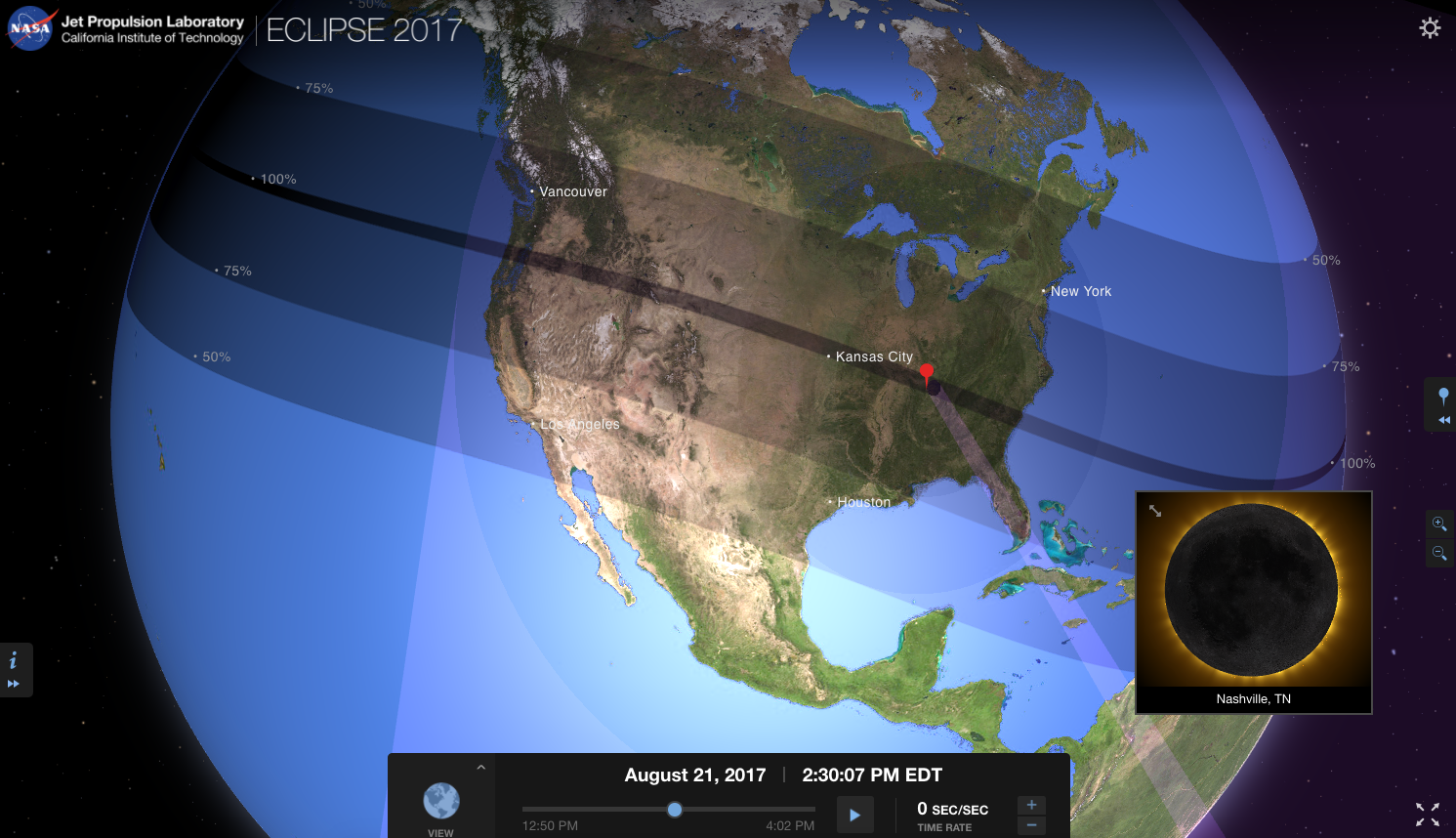Americans are about to experience a solar eclipse.
On August 21, the entire US – including Hawaii and Alaska – will be able to see at least a partial eclipse. People located along one 70-mile-wide streak in particular will be able to see a total solar eclipse, or the moment when the moon crosses between the Earth and the sun, completely blocking out the sun’s light.
For those hoping to see the eclipse, the appearance will vary based on where you are. To help determine what that view will look like ahead of time, a team from NASA’s Jet Propulsion Laboratory built a simulation that maps out what the eclipse looks like during the window it’s over the US.
A word of warning: If you do plan to catch the solar eclipse on August 21, don’t look directly at the sun. There are solar filters designed to let you see the eclipse in a way that will keep your eyes from getting damaged.
Here’s what the eclipse will look like in some of the major cities across the US.
San Francisco will get this view of the eclipse around 10:11 a.m. Pacific time.

Residents of Los Angeles will get to see a partial eclipse at 10:18 a.m. Pacific time.

Phoenix, Arizona will get to see a partial eclipse around 11:24 a.m. Mountain time.

Denver, which is just south of the eclipse's trajectory, will get this view around 11:45 a.m. Mountain time.

The NASA application runs you through the views of the eclipse during the 3-hour window it's happening in the US. Here's the trajectory for Portland, Oregon.
![]()
You can also put in your exact city or zip code — I tested it out with my hometown near Chicago.

Residents of Houston will get to see this view around 1:06 p.m. Central time.

Shortly before then, residents of San Antonio will get to see a partial eclipse around 12:59 p.m. Central time.

Kansas City will get to see a total eclipse around 1:08 p.m. Central time.

Chicagoans will get to glimpse this partial eclipse at 1:26 p.m. Central time.

Nashville is another city that will get to see a full eclipse. That'll happen around 2:30 p.m. Eastern time.

Columbus, Ohio, will get pretty close to a total eclipse around 2:34 p.m. Eastern time.

Charleston, South Carolina will get to see a total eclipse around 2:47 p.m. Eastern time.

New York will get to see a partial eclipse that looks like this around 2:48 p.m. Eastern time.

Washington, D.C., which is a little closer to the full eclipse trajectory, will get this view around the same time, 2:50 p.m. Eastern.

Miami is still a bit farther south of the trajectory, but will still get this view of a partial eclipse around 2:50 p.m. Eastern time.

Philadelphia will get a good view of a partial eclipse starting around 1:30 p.m. Eastern time, getting this view around 3 p.m.

Boston, which is pretty far north of the eclipse's trajectory, will see a partial eclipse that looks like this around 3 p.m. Eastern time.

You can play around with the eclipse simulator more here.

